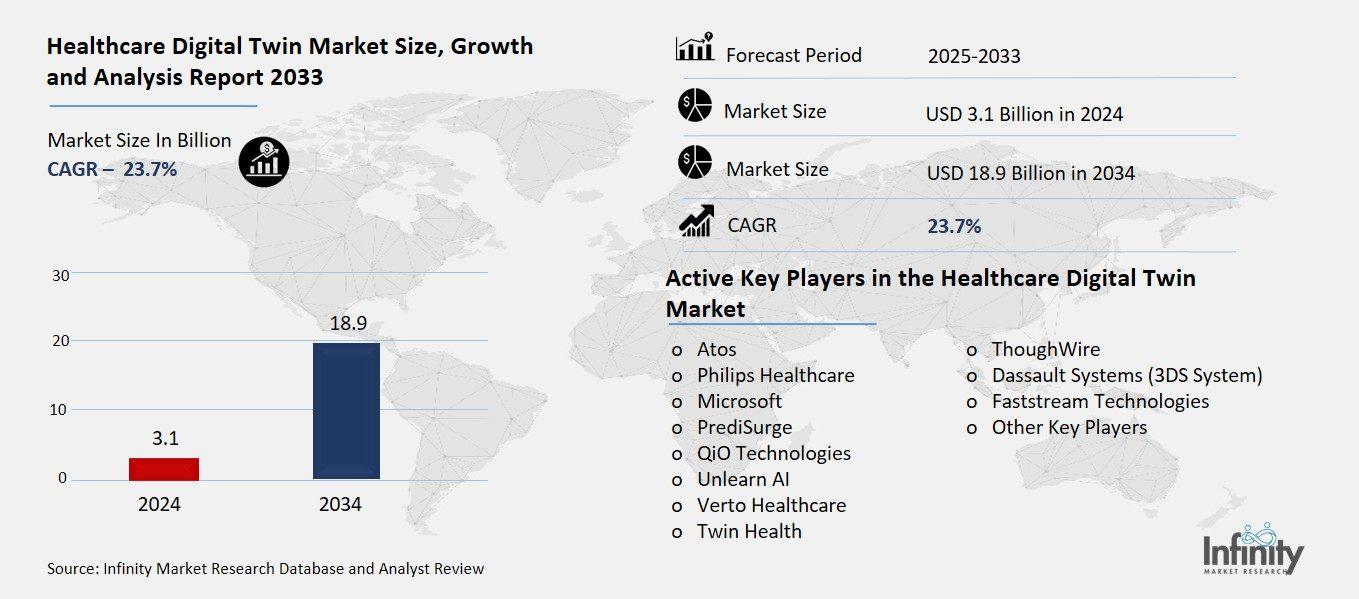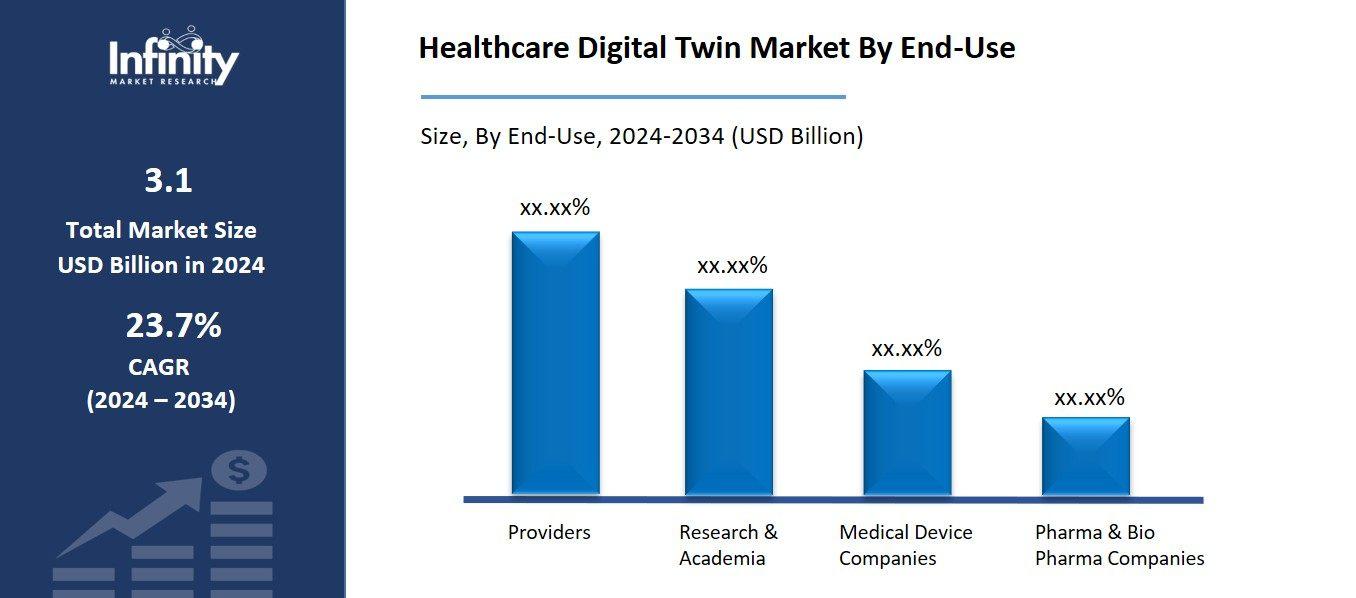
🔐 Secure Payment Guaranteed
Safe checkout with trusted global payment methods.
🌟 Why Choose Infinity Market Research?
At Infinity Market Research, we dont just deliver data — we deliver clarity, confidence, and competitive edge.
In a world driven by insights, we help businesses unlock the infinite potential of informed decisions.
Here why global brands, startups, and decision-makers choose us:
Industry-Centric Expertise
With deep domain knowledge across sectors — from healthcare and technology to manufacturing and consumer goods — our team delivers insights that matter.
Custom Research, Not Cookie-Cutter Reports
Every business is unique, and so are its challenges. Thats why we tailor our research to your specific goals, offering solutions that are actionable, relevant, and reliable.
Data You Can Trust
Our research methodology is rigorous, transparent, and validated at every step. We believe in delivering not just numbers, but numbers that drive real impact.
Client-Centric Approach
Your success is our priority. From first contact to final delivery, our team is responsive, collaborative, and committed to your goals — because you re more than a client; you re a partner.
Recent Reports
Global Myopia Control Lenses Market Report 2025-33
Hyaluronic Acid-based Dermal Fillers Market Report
Healthcare Digital Twin Market
Healthcare Digital Twin Market Global Industry Analysis and Forecast (2024-2033) by Component (Software and Services), Application (Personalized medicine, Medical Device Design and Testing, Surgical planning and medical education, Healthcare workflow optimization & Asset Management, Drug Discovery & development, and Other Applications), End-Use (Providers, Research & Academia, Medical Device Companies, Pharma & Bio Pharma Companies, and Other End-Uses) and Region
Jul 2025
Healthcare
Pages: 138
ID: IMR2112
Healthcare Digital Twin Market Synopsis
The Global Healthcare Digital Twin Market was valued at USD 1.7 billion in 2023 and is expected to grow from USD 3.1 billion in 2024 to USD 18.9 billion by 2033, reflecting a CAGR of 23.7% over the forecast period.
Healthcare Digital Twin covers the increasing area of healthcare that makes virtual duplicates of hospitals, health workflows or patients. These digital counterparts run on current data, as well as AI, machine learning and IoT to look at different healthcare situations, check on patients, foresee how diseases might progress and improve care plans. Personalized medicine, better results from treatments and successful hospital operations are helping the market to develop. Some applications are created for a single patient, like models in diagnostics and therapy choices, while others are used for hospitals to monitor productive workflows and order supplies. Main reasons for it are using more digital health tools, making use of powerful data analysis and a rising need to save money in healthcare.

Healthcare Digital Twin Market Driver Analysis
Growing Focus on Patient Safety and Outcome Optimization
With healthcare digital twins, doctors can see how a patient might react to different medical treatments before these treatments are given in reality. Because a digital copy of the patient contains real-time health information, clinicians can examine different treatment options in a safe virtual environment. It makes it easier to determine the best, safest action, thus making debit drug reactions or useless therapies less likely. For oncology, a digital twin may simulate the response of a tumor to each kind of chemotherapy drug, giving doctors confidence in their planned treatment. As a result, patients are safer and clinical outcomes improve due to better informed, precise and personal choices. In addition, it guides healthcare professionals better, organizes essential resources properly and contributes to advice based on medical research, so it serves as a valuable resource.
Healthcare Digital Twin Market Restraint Analysis
Lack of Standardization and Interoperability
Due to many different types of technologies, data formats and standards in healthcare, it remains hard to integrate information across various healthcare IT systems. Most EHRs, medical imaging systems and lab information systems still use their own proprietary tools and talks to each other. Without standardization, it is tough to merge and connect data into one digital twin model. As a result, real-time information sharing, making data consistent and getting systems to work together, is a big challenge. Without an integrated approach, digital twins might not be able to use essential information about patients which reduces both their effectiveness and accuracy. This can be handled by applying interoperability guidelines, standardizing with HL7 FHIR and encouraging joint action from technology suppliers, healthcare organizations and those responsible for regulation to allow secure exchange of data by multiple systems.
Healthcare Digital Twin Market Opportunity Analysis
Expansion in Telemedicine and Remote Monitoring
Digital twins can help in virtual care by remotely monitoring patients and simulating their health progress as situations happen in real time. When clinicians have a digital copy of their patients that includes information from wearable gadgets, remote monitors and medical records, they can follow a patient’s progress and predict future changes without seeing them in person. As a result, healthcare professionals can spot early signs of worsening, change the treatment plan promptly and intervene when needed. As another application, digital twins can simulate the results of changing a patient’s diet or taking a different drug during virtual doctor visits. As a result, patients get better care, take part more, have fewer hospitalizations and lessen treatment expenses. As people increasingly use virtual care, digital twins become essential for providing regular, customized and forward-looking healthcare at distance.
Healthcare Digital Twin Market Trend Analysis
Shift Toward Predictive and Preventive Healthcare
Shifting from reacting to health situations to anticipating them with help from simulations makes a big change in the healthcare industry. Usually, our approach to care has only dealt with medical issues after they arise. Due to digital twin technology, real-time data and simulations, healthcare professionals are now better able to predict serious health problems. Jointly reviewing data from wearables, medical instruments and patient records, digital twins predict what a patient’s health will look like at any moment in time. Clinicians can, therefore, discover what puts a person at risk, notice early symptoms and take steps to keep health problems at bay. With a digital twin, a cardiovascular condition can be modelled and changes to diet or drugs can be suggested to keep the patient out of the hospital. Using preventive methods improves health and cuts the need for emergency room visits, unplanned treatments and lasting health issues all of which help build a better healthcare system.
Healthcare Digital Twin Market Segment Analysis
The Healthcare Digital Twin Market is segmented on the basis of Component, Application, and End-Use.
By Component
o Software
o Services
By Application
o Personalized medicine
o Medical Device Design and Testing
o Surgical planning and medical education
o Healthcare workflow optimization & Asset Management
o Drug Discovery & development
o Other Applications
By End-Use
o Providers
o Research & Academia
o Medical Device Companies
o Pharma & Bio Pharma Companies
o Other End-Uses
By Region
o North America (U.S., Canada, Mexico)
o Eastern Europe (Bulgaria, The Czech Republic, Hungary, Poland, Romania, Rest of Eastern Europe)
o Western Europe (Germany, UK, France, Netherlands, Italy, Russia, Spain, Rest of Western Europe)
o Asia Pacific (China, India, Japan, South Korea, Malaysia, Thailand, Vietnam, The Philippines, Australia, New-Zealand, Rest of APAC)
o Middle East & Africa (Turkey, Bahrain, Kuwait, Saudi Arabia, Qatar, UAE, Israel, South Africa)
o South America (Brazil, Argentina, Rest of SA)
By Component, Software Segment is Expected to Dominate the Market During the Forecast Period
The components discussed in this research study, the biofuel segment is expected to account for the largest market share of healthcare digital twin market in the forecast period. Software tools form the base for developing and handling digital twins by joining and processing patient data, performing predictive analysis and running continuous simulations. Because personalized medicine and remote patient monitoring are being used more often, healthcare providers use sophisticated tools that can scale well, are easy to use and can connect with health IT software, devices and cloud platforms. With AI and machine learning, digital twin software can now run more accurate modelling and show real-time changes.
By Application, the Personalized Medicine Segment is Expected to Held the Largest Share
The personalized medicine segment is likely to dominate the market. This change is mainly due to the rising need for treatment plans that factor in a person’s genes, life choices and health background. Using digital twins, doctors can test how a patient could react to different medicines or treatments and thus make highly customized treatment choices that are both more effective and safer. Developments in genomics, health technologies for the body and data-driven AI are enabling the use of digital twin technology in personalized medicine. In oncology, cardiology and chronic disease management, digital twins are being tested as virtual tools to check interventions before trying them in practice.
By End-Use, the Providers Segment is Expected to Held the Largest Share
By end-use, the providers segment is expected to hold the largest share of the healthcare digital twin market during the forecast period. The use of digital twin technology in healthcare is mainly deployed by hospitals, clinics and specialty care centers to help with patient care, improve operations and make better choices about patients. With the help of digital twins, providers can practice new treatment methods, expect future stages of a disease and improve hospital workforce actions. It helps bring down costs, lower risks and increase how well patients respond. Because healthcare institutions face pressure to treat patients better and modernize, more of them are turning to AI-powered simulations and constant monitoring tools. At the same time, greater access to EHRs, devices linked with the Internet of Things (IoT) and tools for remote monitoring has made it simpler for providers to introduce digital twin solutions.

Healthcare Digital Twin Market Regional Insights
North America is Expected to Dominate the Market Over the Forecast period
North America is expected to lead the healthcare digital twin market throughout the forecast period thanks to its superior healthcare system, key tech players and early implementation of new health technologies. The area is supported by lots of investment in digital health, widespread use of electronic health records and a strong emphasis on personalized medicine and precision healthcare.
Especially, the United States uses artificial intelligence, IoT and big data analytics in healthcare which provides the ideal environment for using digital twins. Other factors that boost the market are helpful government measures, a bustling research environment and unions between leading smart healthcare groups and business enterprises. Thanks to its active work on patient benefits, disease control and ways to reduce expenses, North America is already adopting digital twins in health care at a high rate.
Recent Development
In May 2024, Ontrak Inc., a leading healthcare company leveraging AI and advanced technology, announced the launch of its Mental Health Digital Twin (MHDT) technology. This cutting-edge innovation in mental health care delivery seamlessly integrates human empathy with data-driven insights to provide personalized, precise, and effective support for individuals experiencing mental health challenges.
In February 2024, The AI company Unlearn secured USD 50 million in a Series C funding round led by Altimeter Capital, aimed at advancing clinical research through its digital twin technology. The funding will support Unlearn’s mission to leverage artificial intelligence to reduce trial and error in healthcare, thereby improving the efficiency and accuracy of clinical trials.
Active Key Players in the Healthcare Digital Twin Market
o Atos
o Philips Healthcare
o PrediSurge
o QiO Technologies
o Unlearn AI
o Verto Healthcare
o Twin Health
o ThoughWire
o Dassault Systems (3DS System)
o Faststream Technologies
o Other Key Players
Global Healthcare Digital Twin Market Scope
|
Global Healthcare Digital Twin Market | |||
|
Base Year: |
2024 |
Forecast Period: |
2024-2033 |
|
Historical Data: |
2017 to 2023 |
Market Size in 2023: |
USD 1.7 Billion |
|
Market Size in 2024: |
USD 3.1 Billion | ||
|
Forecast Period 2024-33 CAGR: |
23.7% |
Market Size in 2033: |
USD 18.9 Billion |
|
Segments Covered: |
By Component |
· Cast · Extrusion · Sheet · Plate · Other Components | |
|
By Application |
· Personalized medicine · Medical Device Design and Testing · Surgical planning and medical education · Healthcare workflow optimization & Asset Management · Drug Discovery & development · Other Applications | ||
|
By End-Use |
· Providers · Research & Academia · Medical Device Companies · Pharma & Bio Pharma Companies · Other End-Uses | ||
|
By Region |
· North America (U.S., Canada, Mexico) · Eastern Europe (Bulgaria, The Czech Republic, Hungary, Poland, Romania, Rest of Eastern Europe) · Western Europe (Germany, UK, France, Netherlands, Italy, Russia, Spain, Rest of Western Europe) · Asia Pacific (China, India, Japan, South Korea, Malaysia, Thailand, Vietnam, The Philippines, Australia, New-Zealand, Rest of APAC) · Middle East & Africa (Turkey, Bahrain, Kuwait, Saudi Arabia, Qatar, UAE, Israel, South Africa) · South America (Brazil, Argentina, Rest of SA) | ||
|
Key Market Drivers: |
· Growing Focus on Patient Safety and Outcome Optimization | ||
|
Key Market Restraints: |
· Lack of Standardization and Interoperability | ||
|
Key Opportunities: |
· Expansion in Telemedicine and Remote Monitoring | ||
|
Companies Covered in the report: |
· Atos, Philips Healthcare, Microsoft, PrediSurge and Other Key Players. | ||
📘 Frequently Asked Questions
1. What would be the forecast period in the Healthcare Digital Twin Market Research report?
Answer: The forecast period in the Healthcare Digital Twin Market Research report is 2024-2033.
2. Who are the key players in the Healthcare Digital Twin Market?
Answer: Atos, Philips Healthcare, Microsoft, PrediSurge and Other Key Players.
3. What are the segments of the Healthcare Digital Twin Market?
Answer: The Healthcare Digital Twin Market is segmented into Component, Application, End-Use, and Regions. By Component, the market is categorized into Software and Services. By Application, the market is categorized into Personalized medicine, Medical Device Design and Testing, Surgical planning and medical education, Healthcare workflow optimization & Asset Management, Drug Discovery & development, and Other Applications. By End-Use, the market is categorized into Providers, Research & Academia, Medical Device Companies, Pharma & Bio Pharma Companies, and Other End-Uses. By region, it is analyzed across North America (U.S.; Canada; Mexico), Eastern Europe (Bulgaria; The Czech Republic; Hungary; Poland; Romania; Rest of Eastern Europe), Western Europe (Germany; UK; France; Netherlands; Italy; Russia; Spain; Rest of Western Europe), Asia-Pacific (China; India; Japan; Southeast Asia, etc.), South America (Brazil; Argentina, etc.), Middle East & Africa (Saudi Arabia; South Africa, etc.).
4. What is the Healthcare Digital Twin Market?
Answer: A healthcare Digital Twin market exists within healthcare to build and use digital copies of patients, devices, hospitals and even complete healthcare systems. They take data in real-time from EHRs, wearables, sensors and imaging devices and add technologies such as AI, machine learning and simulation modelling. The aim is to design modern, working 3D models that support predicting outcomes, creating personalized treatment plans, boosting hospital operations and making clinical decisions.
5. How big is the Healthcare Digital Twin Market?
Answer: The Global Healthcare Digital Twin Market was valued at USD 1.7 billion in 2023 and is expected to grow from USD 3.1 billion in 2024 to USD 18.9 billion by 2033, reflecting a CAGR of 23.7% over the forecast period.


🔐 Secure Payment Guaranteed
Safe checkout with trusted global payment methods.
🌟 Why Choose Infinity Market Research?
- Accurate & Verified Data:Our insights are trusted by global brands and Fortune 500 companies.
- Complete Transparency:No hidden fees, locked content, or misleading claims — ever.
- 24/7 Analyst Support:Our expert team is always available to help you make smarter decisions.
- Instant Savings:Enjoy a flat $1000 OFF on every report.
- Fast & Reliable Delivery:Get your report delivered within 5 working days, guaranteed.
- Tailored Insights:Customized research that fits your industry and specific goals.




